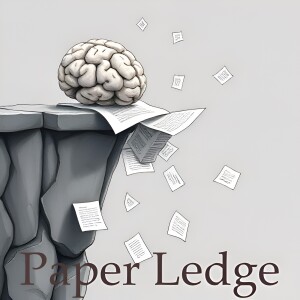
- Podcast Features
-
Monetization
-
Ads Marketplace
Join Ads Marketplace to earn through podcast sponsorships.
-
PodAds
Manage your ads with dynamic ad insertion capability.
-
Apple Podcasts Subscriptions Integration
Monetize with Apple Podcasts Subscriptions via Podbean.
-
Live Streaming
Earn rewards and recurring income from Fan Club membership.
-
Ads Marketplace
- Podbean App
-
Help and Support
-
Help Center
Get the answers and support you need.
-
Podbean Academy
Resources and guides to launch, grow, and monetize podcast.
-
Podbean Blog
Stay updated with the latest podcasting tips and trends.
-
What’s New
Check out our newest and recently released features!
-
Podcasting Smarter
Podcast interviews, best practices, and helpful tips.
-
Help Center
-
Popular Topics
-
How to Start a Podcast
The step-by-step guide to start your own podcast.
-
How to Start a Live Podcast
Create the best live podcast and engage your audience.
-
How to Monetize a Podcast
Tips on making the decision to monetize your podcast.
-
How to Promote Your Podcast
The best ways to get more eyes and ears on your podcast.
-
Podcast Advertising 101
Everything you need to know about podcast advertising.
-
Mobile Podcast Recording Guide
The ultimate guide to recording a podcast on your phone.
-
How to Use Group Recording
Steps to set up and use group recording in the Podbean app.
-
How to Start a Podcast
-
Podcasting
- Podcast Features
-
Monetization
-
Ads Marketplace
Join Ads Marketplace to earn through podcast sponsorships.
-
PodAds
Manage your ads with dynamic ad insertion capability.
-
Apple Podcasts Subscriptions Integration
Monetize with Apple Podcasts Subscriptions via Podbean.
-
Live Streaming
Earn rewards and recurring income from Fan Club membership.
-
Ads Marketplace
- Podbean App
- Advertisers
- Enterprise
- Pricing
-
Resources
-
Help and Support
-
Help Center
Get the answers and support you need.
-
Podbean Academy
Resources and guides to launch, grow, and monetize podcast.
-
Podbean Blog
Stay updated with the latest podcasting tips and trends.
-
What’s New
Check out our newest and recently released features!
-
Podcasting Smarter
Podcast interviews, best practices, and helpful tips.
-
Help Center
-
Popular Topics
-
How to Start a Podcast
The step-by-step guide to start your own podcast.
-
How to Start a Live Podcast
Create the best live podcast and engage your audience.
-
How to Monetize a Podcast
Tips on making the decision to monetize your podcast.
-
How to Promote Your Podcast
The best ways to get more eyes and ears on your podcast.
-
Podcast Advertising 101
Everything you need to know about podcast advertising.
-
Mobile Podcast Recording Guide
The ultimate guide to recording a podcast on your phone.
-
How to Use Group Recording
Steps to set up and use group recording in the Podbean app.
-
How to Start a Podcast
-
Help and Support
- Discover

Computer Vision - Breaking the Barriers Video Vision Transformers for Word-Level Sign Language Recognition
Hey PaperLedge crew, Ernis here, ready to dive into some groundbreaking research! Today, we're tackling a topic near and dear to my heart: bridging communication gaps. Specifically, we're looking at how AI can help make sign language more accessible to everyone.
Now, think about sign language for a moment. It's so much more than just hand movements, right? It's a rich, expressive language that uses gestures, facial expressions, and body language to convey meaning. It’s the primary way the Deaf and hard-of-hearing (DHH) community communicates. But here's the thing: most hearing people don't know sign language. This creates a huge barrier, making everyday interactions a real challenge.
Imagine trying to order coffee, or ask for directions, without being able to verbally communicate. That's the reality for many DHH individuals. So, how can we break down this wall?
That’s where this awesome research comes in! Scientists are working on something called automatic sign language recognition (SLR). The goal is to create AI systems that can automatically translate sign language into text or speech, and vice-versa. Think of it as a universal translator for sign language!
Now, building an SLR system is no easy feat. Recognizing individual signs is one thing, but understanding dynamic word-level sign language – where context and the flow of movements matter – is a whole other ballgame. It's like trying to understand a sentence by only looking at individual letters; you miss the bigger picture. The AI needs to understand how signs relate to each other over time.
Traditionally, researchers have used something called Convolutional Neural Networks (CNNs) for this. Imagine CNNs as filters that scan the video of someone signing, picking out key features like hand shapes and movements. The problem? CNNs are resource intensive, and they struggle to capture the overall flow of a signed sentence. They can miss those crucial global relationships between movements that happen throughout the entire video.
That’s where the heroes of our story come in: Transformers! These aren't the robots in disguise (though, that would be cool!). In AI, Transformers are a type of neural network architecture that uses something called self-attention. Think of self-attention as the AI's ability to pay attention to all parts of the video at once, figuring out how each gesture relates to the others. It's like understanding the entire symphony, not just individual notes. It helps the AI to capture global relationships between spatial and temporal dimensions, which makes them suitable for complex gesture recognition tasks.
This particular research paper uses a Video Vision Transformer (ViViT) model – a Transformer specifically designed for video analysis – to recognize American Sign Language (ASL) at the word level. They even used something called VideoMAE in their research.
And guess what? The results are impressive! The model achieved a Top-1 accuracy of 75.58% on a standard dataset called WLASL100. That's significantly better than traditional CNNs, which only managed around 65.89%. This shows that Transformers have the potential to dramatically improve SLR.
In essence, this research demonstrates that transformer-based architectures have great potential to advance SLR, overcome communication barriers and promote the inclusion of DHH individuals.
So, why does this matter?
- For the DHH community: This technology could lead to more accessible communication tools, breaking down barriers and fostering greater inclusion.
- For AI researchers: This research offers valuable insights into how to build more effective video recognition systems.
- For everyone: By bridging communication gaps, we can create a more understanding and inclusive world for all.
This research raises some interesting questions, right?
- How can we ensure that these AI systems are culturally sensitive and accurately represent the nuances of different sign languages?
- What are the ethical considerations surrounding the use of AI in communication, particularly in relation to privacy and data security?
I’m super curious to hear your thoughts on this. Let’s keep the conversation going!
Credit to Paper authors: Alexander Brettmann, Jakob Grävinghoff, Marlene Rüschoff, Marie Westhues
More Episodes
Create your
podcast in
minutes
- Full-featured podcast site
- Unlimited storage and bandwidth
- Comprehensive podcast stats
- Distribute to Apple Podcasts, Spotify, and more
- Make money with your podcast
It is Free
- Privacy Policy
- Cookie Policy
- Terms of Use
- Consent Preferences
- Copyright © 2015-2025 Podbean.com





